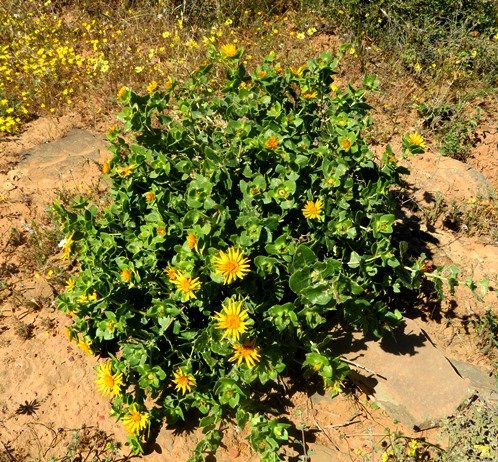Didelta

Author: Ivan Lätti
Photographer: Thabo Maphisa
Didelta is a genus of perennial herbs and shrubs in the Asteraceae or daisy family. The generic name, Didelta, is derived from the Greek words dis meaning twice or double and delta meaning a triangle, referring to the somewhat triangular floral bracts. The common name is salad thistle, the bracts and leaves sometimes spiny.
The simple leaves are alternate or opposite and sessile. The margins are entire or spiny, the blades thinly fleshy and hairless or felted.
Two rows of bracts below the flowerheads consist of three to five in the outer row, large, triangular and leaf-like, while several lanceolate ones form the inner row or ring, sometimes with spiny margins. The flat receptacle is honey-combed or deeply pitted; its outer cells thick-walled.
Some of the solitary flowerheads have peduncles and all have sterile, yellow ray florets around yellow discs. The five-lobed, tubular disc florets are bisexual throughout, or the inner ones are male. The upper tube parts may be somewhat bell-shaped, the lobes linear to lanceolate.
The anthers are shaped like arrowheads at the base with lance-shaped appendages at their tips. The style is cylindrical with linear branches. There is a pappus of scales on the flask-shaped, ribbed fruit. The outer bracts attached to the fruits contribute to wind dispersal of the seeds.
There are only two species of Didelta, both occurring in the western, winter rainfall, fynbos region of southern Africa (Leistner, (Ed.), 2000; Manning, 2007; iNaturalist).

